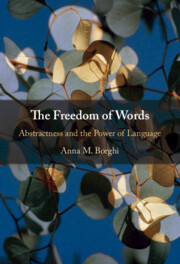Part II - Abstractness and Language
Published online by Cambridge University Press: 20 July 2023
Summary

- Type
- Chapter
- Information
- The Freedom of WordsAbstractness and the Power of Language, pp. 151 - 290Publisher: Cambridge University PressPrint publication year: 2023



